Have you experienced the awe-inspiring phenomenon of observing a comet? These dazzling celestial bodies have often played a central role in many myths and legends. However, comets are not bearers of magic or anything similar. In reality, they are thought to be remnants from the creation of planets and stars billions of years in the past. Comets are an amalgamation of various forms of ice including water, carbon dioxide, ammonia, and methane, which is combined with dust. They primarily consist of an icy core, also known as a nucleus, enveloped by an extensive cloud of gas and dust often referred to as the coma. This makes up the signature composition of the most spectacular comets.
A comet’s path and motion is dictated by gravity from the planets and stars they pass. Therefore when a comet is in our solar system, most of the gravity affecting its motion is due to the sun and as it gets closer to the sun the faster it moves (because the closer an object is to the sun the stronger the sun’s gravity is on it). As well as moving faster, a comet’s tail grows because more of its ice evaporates. As of early 2016, there are more than 5,260 known comets, a number that is steadily increasing. However, only a few have made a huge impact on our skies. Are you ready to learn about these fascinating comets? Then check out these 25 Most Impressive Comets Ever Seen.
Great Comet of 1680
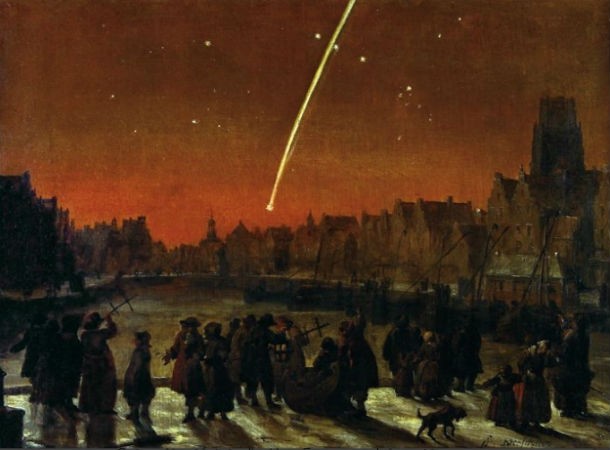 Source: Wikipedia, Image: Wikipedia
Source: Wikipedia, Image: Wikipedia This magnificent comet was discovered by German astronomer Gottfried Kirch on November 14, 1680, and became one of the brightest of the seventeenth century. It was reputedly visible even in daytime and was noted for its spectacularly long tail.
Mrkos (1957)
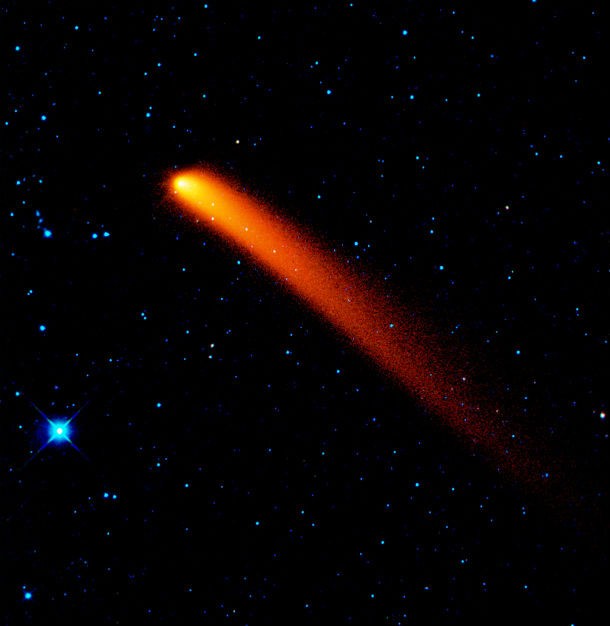 Source: Wikipedia, Image: Wikipedia
Source: Wikipedia, Image: Wikipedia Comet Mrkos was photographed by Alan McClure on August 13, 1957. The picture impressed astronomers since it showed two types of cometary tails, the straight ion tail and the curved dust tail. Both tails pointed away from the sun.
De Kock–Paraskevopoulos (1941)
 Source: Wikipedia, Image: Wikipedia
Source: Wikipedia, Image: Wikipedia This weirdly beautiful comet is best remembered for its long but faint tail and was visible at both dawn and dusk. It was independently discovered by an amateur astronomer named De Kock and decorated Greek astronomer John S. Paraskevopoulos, who also discovered a crater on the moon and named it after himself.
Skjellerup–Maristany (1927)
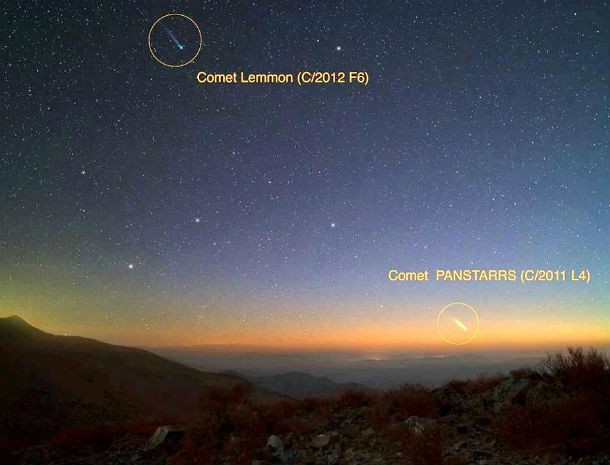 Source: Wikipedia, Image: Wikipedia
Source: Wikipedia, Image: Wikipedia Comet Skjellerup–Maristany was a long-period comet that became very bright in 1927. This great comet was observable to the naked eye for about thirty-two days and was independently discovered by Australian astronomer John Francis Skjellerup and Argentine astronomer Edmundo Maristany.
Mellish (1917)
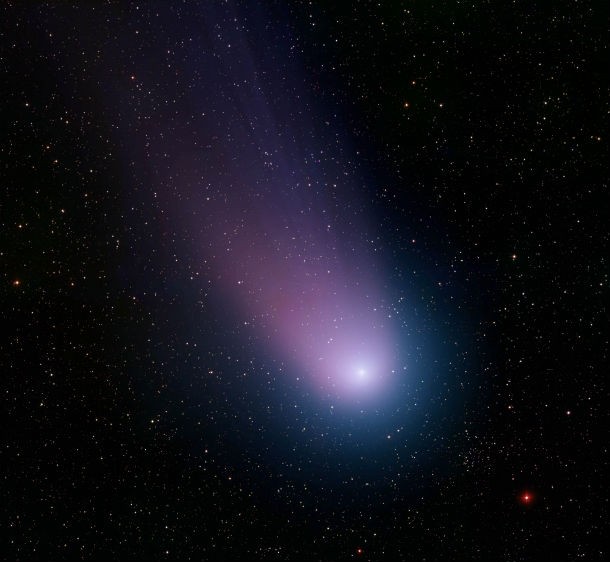 Source: Wikipedia, Image: solarviews.com
Source: Wikipedia, Image: solarviews.com Mellish was an impressive periodic comet mainly seen in the southern hemisphere. Many astronomers believe that Mellish could possibly return in 2061, the same year as Halley.
Brooks (1911)
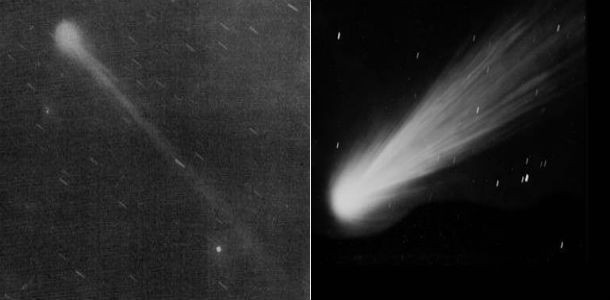 Source: Wikipedia, Image: cometbase.com
Source: Wikipedia, Image: cometbase.com This bright comet was discovered in July 1911 by astronomer William Robert Brooks. It is best remembered for becoming a bright naked-eye object and its distinct blue color, which was the result of the emission of carbon monoxide ions.
Daniel (1907)
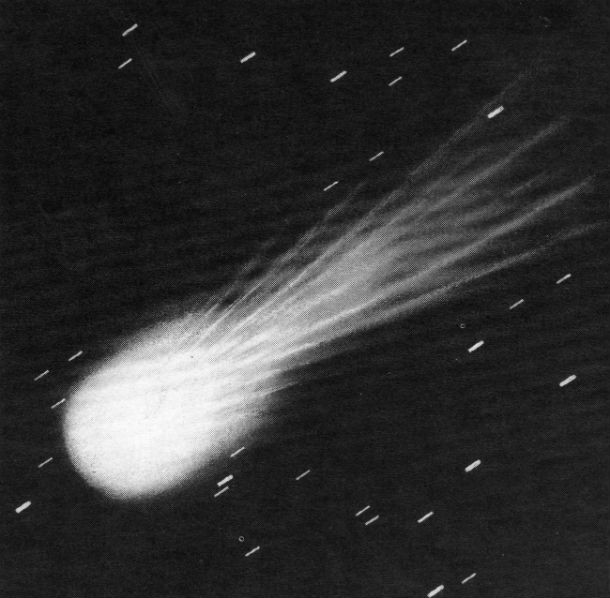 Source: Wikipedia, Image: commons.wikimedia
Source: Wikipedia, Image: commons.wikimedia Photographed more than any comet that came before it, Comet Daniel was one of the most widely seen comets of the early twentieth century.
Lovejoy (2011)
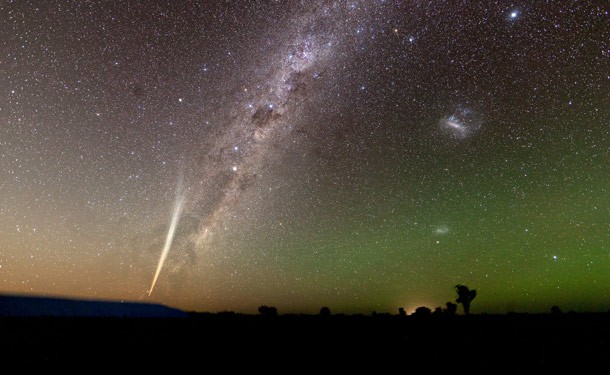 Source: Wikipedia, Image: Wikipedia
Source: Wikipedia, Image: Wikipedia Comet Lovejoy is a long-period comet and Kreutz Sungrazer (a family of sun-grazing comets, characterized by orbits taking them extremely close to the sun at perihelion). It was discovered in November 2011 by Australian amateur astronomer Terry Lovejoy.
Bennett (1970)
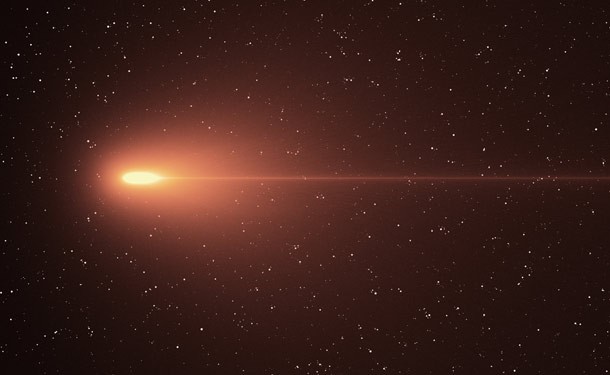 Source: Wikipedia, Image (Not actual comet)
Source: Wikipedia, Image (Not actual comet) Discovered by John Caister Bennett on December 28, 1969, while still almost two astronomical units from the sun, Comet Bennett, formally known as C/1969 Y1, was one of two brilliant comets to grace the 1970s, along with Comet West.
Seki-Lines (1962)
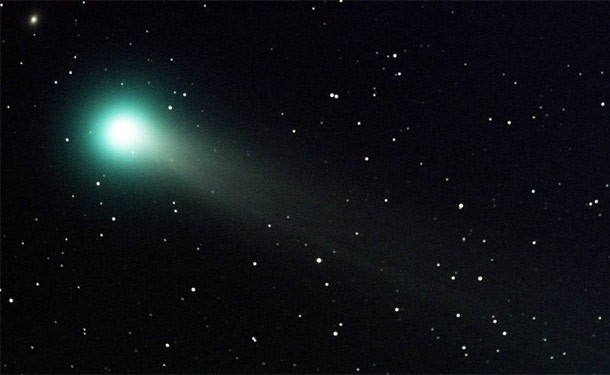 Source: Wikipedia, Image: NASA (Not actual Seki-Lines)
Source: Wikipedia, Image: NASA (Not actual Seki-Lines) Initially visible from the southern hemisphere, Seki-Lines brightened rapidly as it approached perihelion on April 1. It was the brightest comet that year and one of the brightest of the last century.
Arend–Roland (1956)
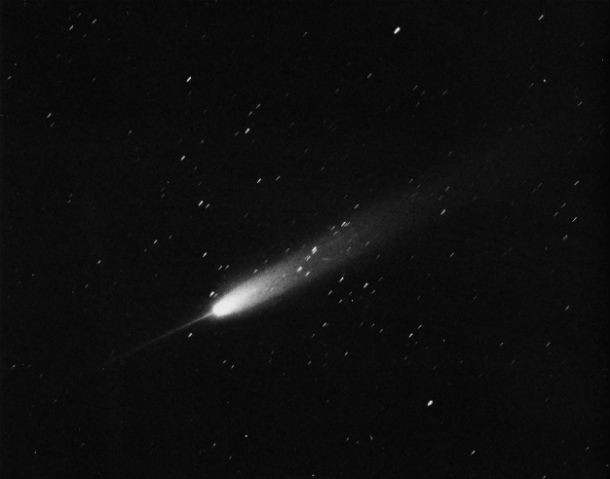 Source: Wikipedia, Image: Wikipedia
Source: Wikipedia, Image: Wikipedia Visible only from the southern hemisphere during the first half of April, Arend–Roland was discovered on November 8, 1956, by Belgian astronomers Sylvain Arend and Georges Roland on photographic plates. As the eighth comet found in 1956, it was named Arend–Roland 1956 after its discoverers.
Comets are not the only astronomical objects you should look out for, check out these 25 Strangest Things Found In Outer Space.
Eclipse Comet (1948)
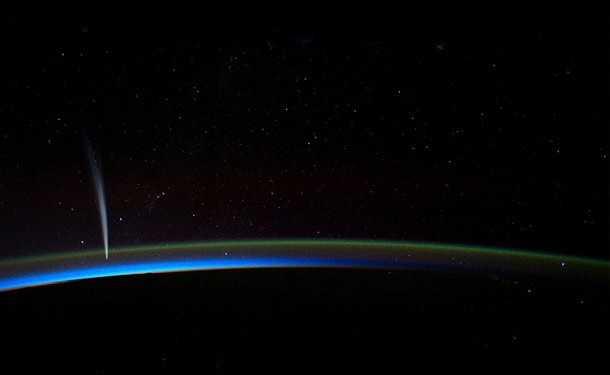 Source: Wikipedia, Image: pixabay (Not actual Eclipse comet)
Source: Wikipedia, Image: pixabay (Not actual Eclipse comet) The Eclipse Comet of 1948 was an exceptionally bright comet discovered during a solar eclipse on November 1, 1948. Although there have been many comets that have been seen during solar eclipses, the Eclipse Comet of 1948 is considered the best known.
Viscara (1901)
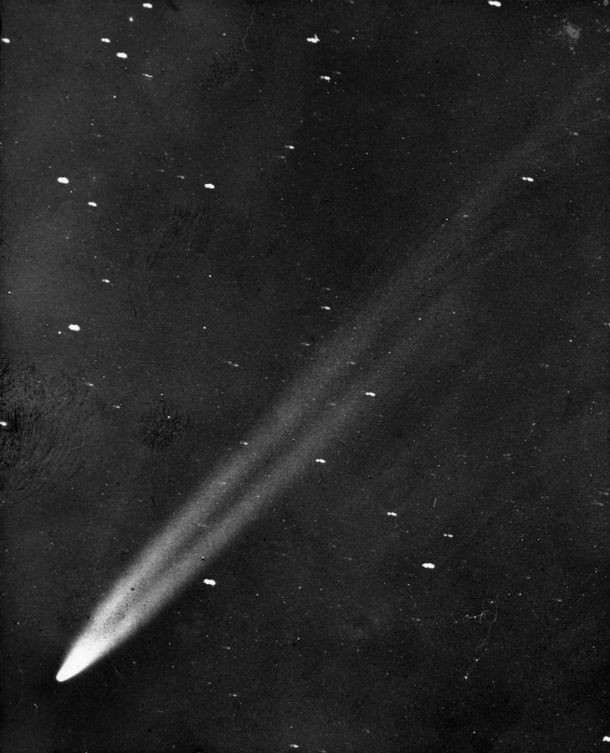 Source: Wikipedia, Image: commons.wikimedia
Source: Wikipedia, Image: commons.wikimedia The Great Comet of 1901, sometimes known as Comet Viscara, was a comet that became bright in spring of that year. Visible exclusively from the southern hemisphere, it was discovered on the morning of April 12, as a naked-eye object of second magnitude with a short tail.
McNaught (2007)
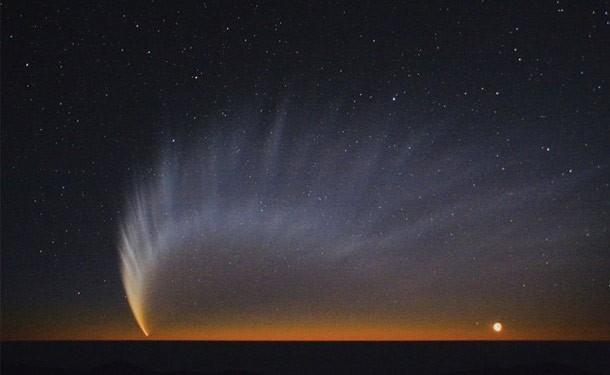 Source: Wikipedia, Image: NASA
Source: Wikipedia, Image: NASA Comet McNaught, also known as the Great Comet of 2007, is a non-periodic comet discovered on August 7, 2006, by British-Australian astronomer Robert H. McNaught using the Uppsala Southern Schmidt Telescope. It was the brightest comet in over forty years and was easily visible to the naked eye for observers in the southern hemisphere in January and February 2007.
Hyakutake (1996)
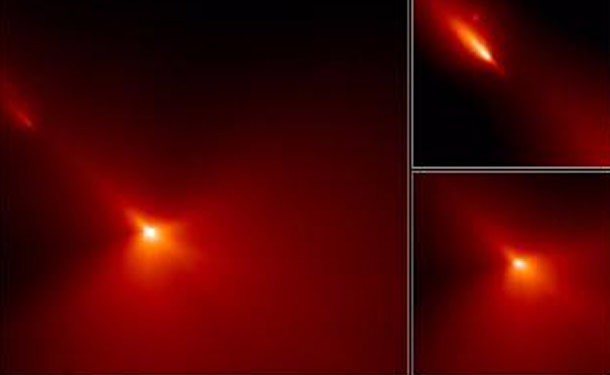 Source: Wikipedia, Image: NASA
Source: Wikipedia, Image: NASA Comet Hyakutake is a comet discovered on January 31, 1996, that passed very close to Earth in March of that year. It was dubbed “the Great Comet of 1996,” and its passage near Earth was one of the closest approaches of the previous two hundred years.
West (1976)
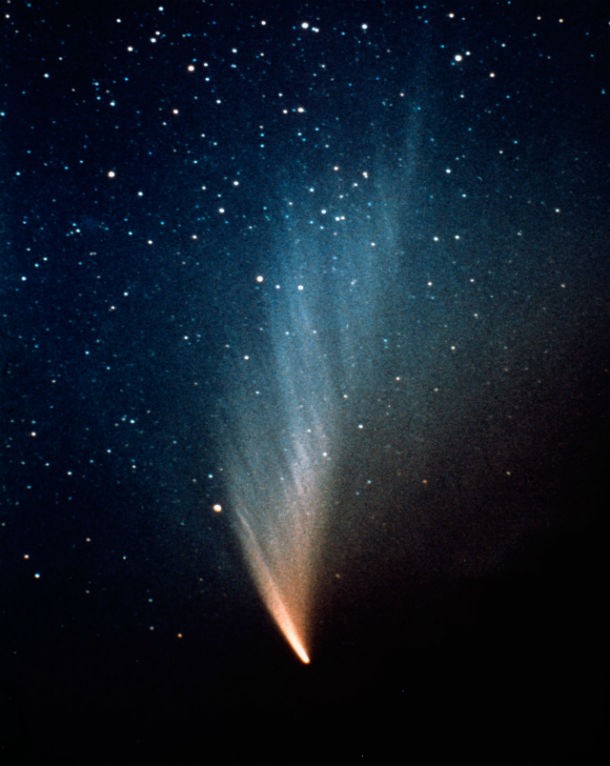 Source: Wikipedia, Image: Wikipedia
Source: Wikipedia, Image: Wikipedia Comet West was a breathtaking and eye-catching comet, sometimes considered to qualify for the status of “great comet.”
Ikeya-Seki (1965)
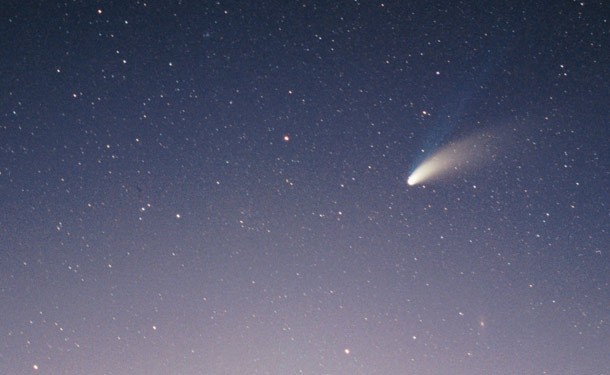 Source: Wikipedia, Image: wikipedia (not actual Ikeya-Seki)
Source: Wikipedia, Image: wikipedia (not actual Ikeya-Seki) Also known as the “great twentieth-century comet,” this showstopper was the brightest comet of the previous century, visible in full daylight within a few degrees of the sun. According to Japanese observers it appeared to be about ten times brighter than a full moon.
Halley’s Comet (1910)
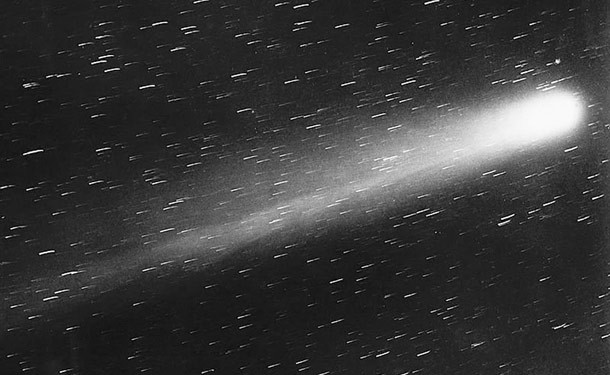 Source: Wikipedia, Image: Wikipedia
Source: Wikipedia, Image: Wikipedia On the morning of May 19, after the moon had set, Halley’s tail could be seen all over the sky, making 1910 a great year for comets.
Great Southern Comet (1947)
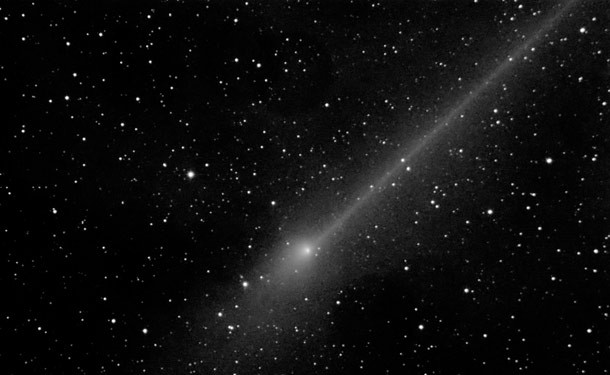 Source: Wikipedia, Image: Wikipedia (Not actual Great Southern Comet)
Source: Wikipedia, Image: Wikipedia (Not actual Great Southern Comet) In December 1947 there suddenly appeared, close to the setting sun, a truly great comet, the brightest to be observed since Halley’s Comet made its latest spectacular return in 1910. So many people saw the new comet at the same time that no one observer could be credited with its discovery.
Great January Comet (1910)
 Source: Wikipedia, Image: Wikipedia
Source: Wikipedia, Image: Wikipedia This comet was visible during the day on January 17, 1910, as a snowy-white object with a long impressive tail.
Great Comet of 1577
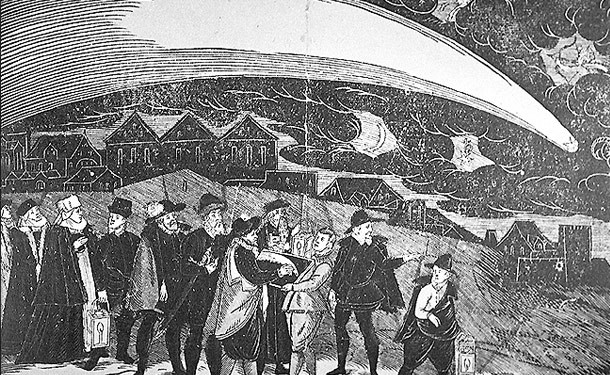 Source: Wikipedia, Image: Wikipedia
Source: Wikipedia, Image: Wikipedia One of the first comets to be seen with the naked eye in modern history, the Great Comet of 1577 passed close to Earth. It was viewed by many people all over Europe, including the Danish astronomer Tycho Brahe. From his observations of the comet, Brahe was able to discover that comets and similar objects travel above Earth’s atmosphere.
Great Comet of 1744
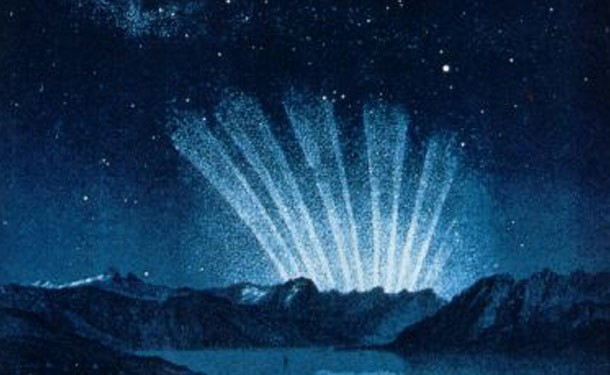 Source: Wikipedia, Image: Wikipedia
Source: Wikipedia, Image: Wikipedia The Great Comet of 1744, also known as Comet de Chéseaux, was a particularly impressive comet that was observed during 1743 and 1744. It became visible to the naked eye for several months in 1744 and displayed dramatic and unusual effects in the sky. Its intrinsic brightness was the sixth highest in recorded history.
Hale–Bopp (1997)
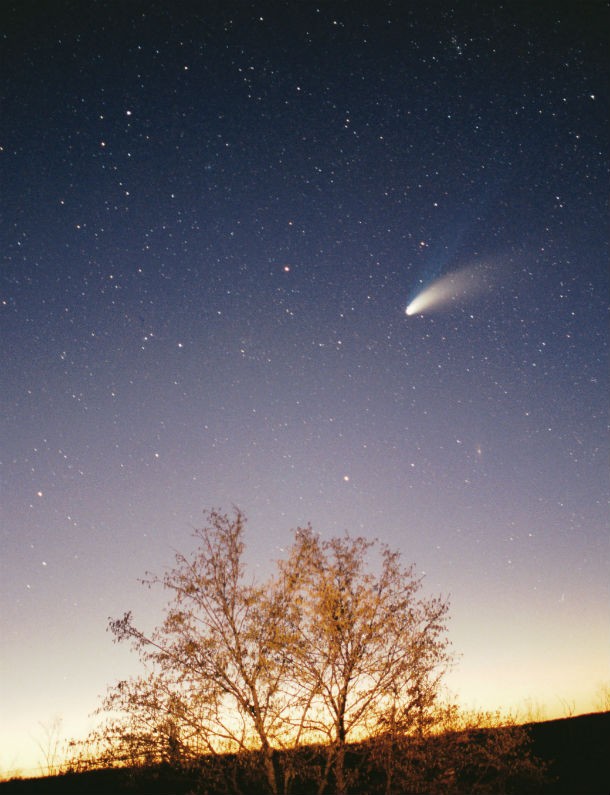 Source: Wikipedia, Image: Wikipedia
Source: Wikipedia, Image: Wikipedia Hale–Bopp was perhaps the most widely observed comet of the twentieth century and one of the brightest seen in contemporary history. It was visible to the naked eye for a record eighteen months, twice as long as the previous record holder, the Great Comet of 1811. According to a survey by Maricopa Research, the comet was seen by eighty-one percent of American adults.
Great September Comet (1882)
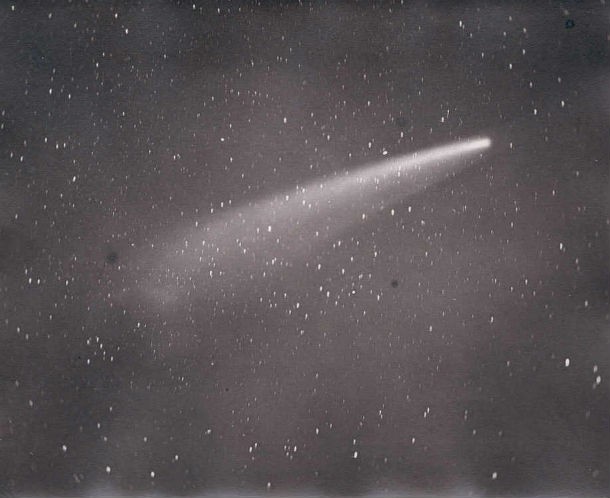 Source: Wikipedia, Image: Wikipedia
Source: Wikipedia, Image: Wikipedia This was a comet that became very bright in September 1882. It was so bright that it could be seen next to the sun at its perihelion.
Kohoutek (1973)
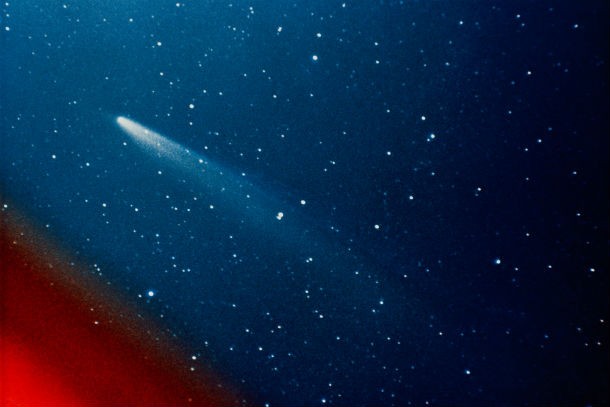 Source: Wikipedia, Image: Wikipedia
Source: Wikipedia, Image: Wikipedia Heavily billed as potentially “the Comet of the Century,” it indeed became a spectacular object right after perihelion but only as seen from Skylab III. Comet Kohoutek was first sighted on March 7, 1973, by Czech astronomer Luboš Kohoutek. It attained perihelion on December 28. It is considered a long-period comet and its previous appearance was about 150,000 years ago. Keep in mind that its return is estimated to be in about 75,000 years.



























